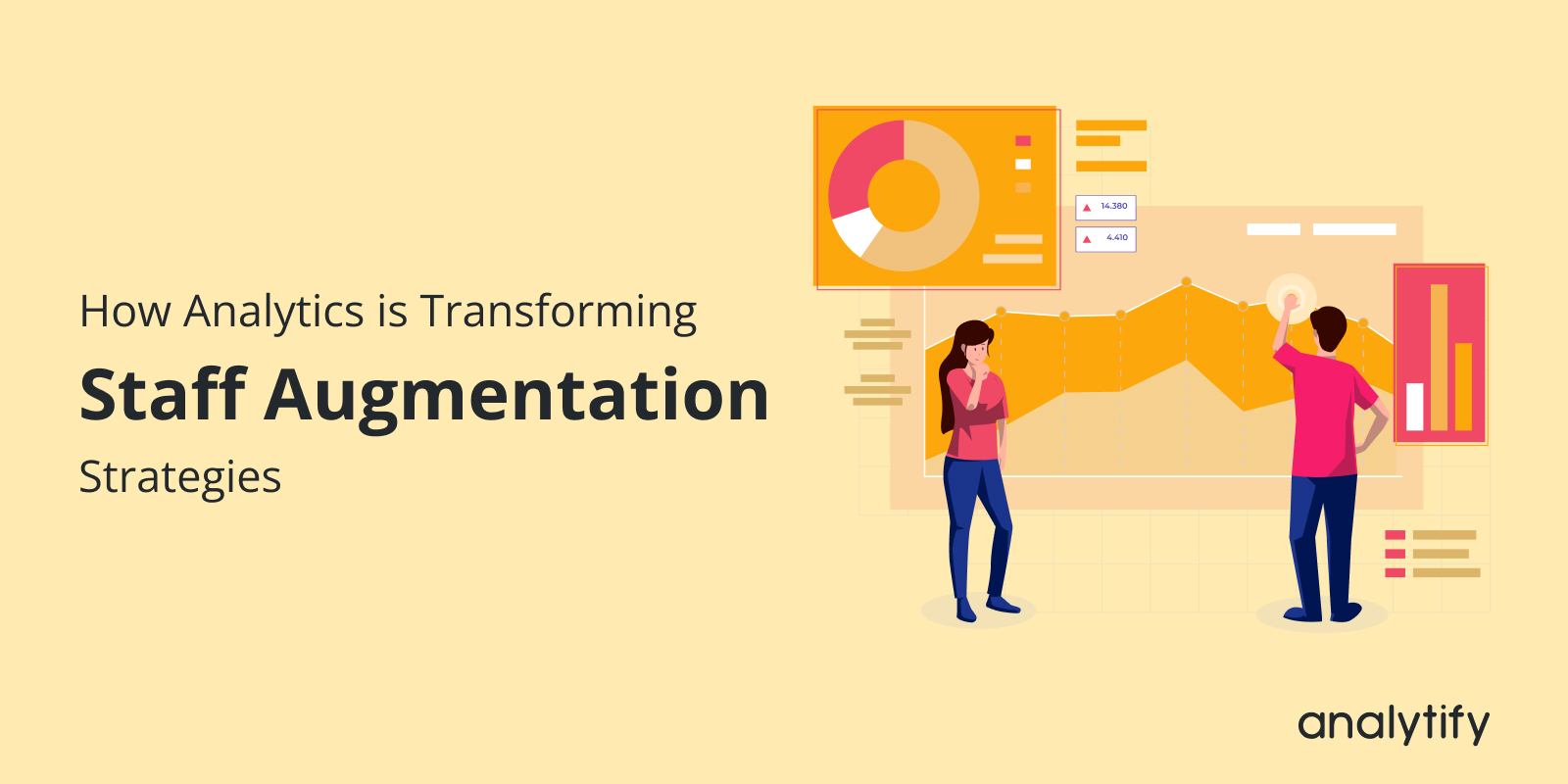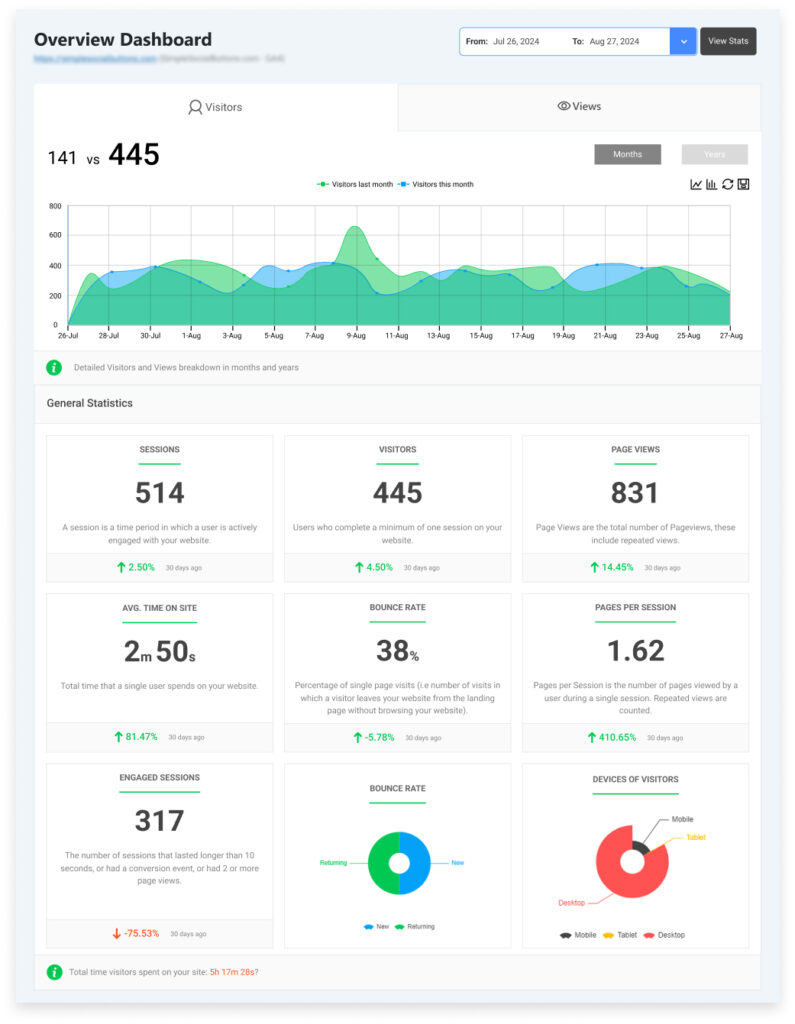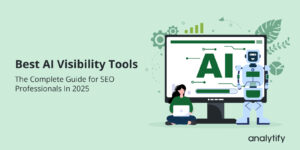
The Role of Analytics in Staff Augmentation (2025)
Staff augmentation is an outsourcing solution that allows businesses to hire skilled professionals on a project or temporary basis to be a part of a larger team. Unlike traditional hiring, staff augmentation provides immediate access to skilled experts without any long-term commitment and at a low overhead cost. The staff augmentation market is experiencing massive growth in recent times, driven by a huge demand for specialized skills.
Businesses are trying to fill gaps and scale up their operations, but finding qualified candidates remains a major challenge. This is where staff augmentation can help. The global staff augmentation market is expected to reach $857.2 billion by 2031, which is a compound annual growth rate (CAGR) of 13.2% from 2024 to 2031.
In this article, you’ll learn the role of analytics in staffing.
Staff Augmentation Analytics (TOC):
The Role of Analytics in Staff Augmentation
The complexity of control and monitoring, especially in distributed settings, is a challenge for many organizations.
Workforce Analytics plays an important role in improving the staff augmentation strategy, making it more effective. Analytics help businesses leverage data-driven insights to make informed decisions. With recent advances in data technology, companies can now find more qualified workers, manage the team, and also measure success.
According to Forbes Research Council, here are some advantages of using analytics in staff augmentation and human resources.
- Improved workforce planning – Data analytics can help employers assess employee performance in different situations. This includes remote workers, in-house employees, and those working with independent contractors. It also helps minimize employment risks and devise an effective hiring model.
- Anticipating the hiring requirement – Employees face many challenges when they assess their future staffing needs. Predictive analytics and big data can help them project future employment requirements and allocate capital to meet the staffing needs.
- Identify gaps in skill – Analytics can find skill gaps in the workforce by assessing requirements, existing skills, and employee performance data, and then comparing it with industry benchmarks. This helps identify areas where there is a need for staff augmentation.
- Find overlooked talent – Many employees and prospects remain under the radar. Some of them are better than others in certain tasks. With data analytics, companies can match the right applicants or employees with the right job responsibilities.
- Deciding on the right staffing model – Businesses can choose from many staffing models. Data analytics will help companies analyze the effectiveness of each model and select one that is the best match.
- Improved screening and short listing – Automated resume screening with machine learning and Natural Language Processing (NLP) streamlines the hiring process. This lets businesses focus on the most promising candidates.
- Predictive candidate matching – Performance metrics and historical data on successful hires can help build a predictive model. This helps companies identify people who are most likely to succeed in specific roles.
- Evaluate and monitor staff performance – Key performance indicators (KPIs) will help define and track to analyze the quality and effectiveness of the delivered work.
- Lower the staffing cost – HR software with data analytics technology will minimize the size of the human resource team, thereby reducing the staffing cost.
- It can forecast employee turnover – Predictive models can find patterns that reveal the staff most likely to leave, which allows the business to develop an attractive retention plan.
What Statistics Will Help Us?
We interviewed the Newwavedevs team responsible for IT staff augmentation and discussed several key statistical metrics with them. These statistical metrics use analytics to measure the efficiency and effectiveness of staff augmentation in supplementing the in-house team. By tracking these metrics, a business will be able to optimize its staff augmentation strategy, identify improvement areas, and make sure that it is getting the best return.
Communication Responsiveness
One key metric to assess the effectiveness of staff augmentation is the average response time in messengers and email. This is important because a delay in communication can lead to a loss of team momentum. It can cause project delays and poor customer relationships. Tools like Slack analytics, Microsoft Teams Insights, and internal bots can track and assess responsiveness.
Time-Zone Overlap
Time-zone overlap is an important statistical metric in IT staff augmentation. This refers to the time spent by the team members in working together, impacting communication, collaboration, and overall efficiency of the project. Insufficient overlap may hinder productivity. Optimal overlap, on the other hand, allows faster decision-making.
Its positive impacts include –
- Improved collaboration and communication enable knowledge sharing and address the pending issues quickly.
- More overlap allows frequent interactions, and this enables strong teamwork and better cohesion.
- Members interact more often, leading to collaborative problem-solving, making the organization more effective. Participation in meetings, initiative, frequency of comments, and mentions all indicate collaboration in the workplace.
- Teams having sufficient overlap are more productive.
On the other hand, low engagement often precedes turnover or burnout. Engagement is the key to maintaining culture and a common goal. Assessment can be done using Integrations with Notion, Jira, GitHub (activity in tasks, commits), engagement surveys, and behavioral analytics.
Other Metrics
Below are some other metrics that act as staffing solutions.
Alignment Metrics
This metric assesses how well the augmented staff is aligning with the overall project goals. It refers to the contribution to innovation and alignment with project timelines. Alignment metrics are very important for long-term projects and also for jobs that need a high level of innovation and collaboration.
Autonomy Index
Autonomy index refers to the frequency of help requests vs. independent execution. It helps businesses understand how effectively and independently the augmented IT people can work. By tracking the autonomy index and other relevant metrics, businesses are able to improve their staff augmentation strategy and reap maximum benefits.
Risks and Ethical Aspects
The use of analytics in staff augmentation offers many advantages. However, there are also risks and ethical considerations, like data security concerns, integration, and communication challenges. There is also a genuine challenge regarding transparency and trust while using different metrics. There is an urgent need to ensure fairness and prevent bias, particularly while using tools that are powered by AI.
Team members from different cultural backgrounds, communication styles, and time zone differences may hinder collaboration between the internal team and augmented staff.
There can also be data breach concerns when external staff have access to key business information and data.
Ethical Considerations –
- Fairness and bias – Analytics tools using AI can further boost existing biases if the tool has been trained on data that is biased. This can lead to an unfair hiring practice.
- Accountability and transparency – It is important to be transparent, especially with augmented staff, to ensure accountability and meet ethical standards.
- Data privacy – Businesses need to follow ethical practices and must adhere to privacy regulations while dealing with sensitive employee and candidate data.
The right staff augmentation strategy helps businesses grow by getting highly skilled workers at a low overhead cost. The use of analytics tools makes this more effective. By tracking performance, evaluating employee engagement, analyzing client satisfaction, and fostering continuous growth, businesses can get valuable insights, which help them grow fast.
Integrate Analytics with Staff Augmentation Using Analytify
Join 50,000+ beginners & professionals who use Analytify to simplify their Google Analytics!
When implementing staff augmentation strategies, understanding the performance of both your in-house and augmented teams is essential. Analytify, a powerful Google Analytics plugin for WordPress, offers an efficient way to track the performance of your augmented staff working on digital platforms. It allows you to measure key metrics, such as website traffic, user behavior, and conversions, which can provide valuable insights into how well your augmented team is contributing to the company’s goals.
Let’s see how Analytify’s analytics can help you in staff augmentation strategies!
- Monitor Web Performance of Augmented Staff:
If your augmented team is working on your website or managing your online campaigns, Analytify helps you monitor their performance through real-time analytics. Track page visits, user engagement, and conversion rates to ensure your augmented team is making an impact. - Streamline Reporting and Decision-Making:
Analytify integrates seamlessly with Google Analytics, providing easy-to-understand reports directly in your WordPress dashboard. This helps you evaluate the effectiveness of your augmented staff in real-time, enabling you to make quick, data-driven decisions about how to manage your team. - Improve User Experience and Outcomes:
By tracking how augmented staff interacts with site visitors, you can identify areas for improvement in customer service or user experience. Analytify’s insights can help you optimize processes, content, and strategies, leading to better results from your augmented team. - Assess the ROI of Staff Augmentation:
With detailed analytics on web traffic, conversion rates, and engagement metrics, Analytify helps businesses understand the true return on investment (ROI) from their staff augmentation efforts. Whether it’s handling content creation, customer support, or digital marketing, Analytify offers insights that ensure your augmented team is contributing effectively to business goals.
Staff Augmentation Analytics (FAQ)
1. What is staff augmentation analytics?
Staff augmentation analytics refers to the use of data analysis tools and techniques to optimize the process of integrating external professionals into an organization’s workforce. By leveraging analytics, businesses can assess the effectiveness of augmented staff, identify skill gaps, and make data-driven decisions to enhance team performance.
2. How does staff augmentation benefit businesses?
Staff augmentation offers several advantages:
Access to Specialized Skills: Quickly acquire expertise not available internally.
Cost Efficiency: Reduce recruitment and training expenses.
Scalability: Adjust team size based on project needs.
Flexibility: Engage professionals for short-term or long-term requirements.
These benefits enable businesses to remain agile and competitive in dynamic markets.
3. What metrics are used in staff augmentation analytics?
Key performance indicators (KPIs) include:
Time-to-Hire: Duration taken to onboard augmented staff.
Productivity Levels: Output and efficiency of augmented professionals.
Cost Savings: Comparison of expenses before and after augmentation.
Quality of Work: Assessing the standard of deliverables.
These metrics help in evaluating the success and ROI of staff augmentation initiatives.
4. How can analytics improve staff augmentation?
Analytics enhances staff augmentation by:
Predicting Future Needs: Anticipating skill requirements based on project pipelines.
Optimizing Team Composition: Aligning augmented staff skills with organizational goals.
Monitoring Performance: Tracking the effectiveness of augmented professionals through data.
This data-driven approach ensures that businesses make informed decisions, leading to improved outcomes.
5. What are the challenges of using analytics in staff augmentation?
Challenges include:
Data Integration: Combining data from various sources can be complex.
Privacy Concerns: Ensuring the protection of sensitive information.
Bias in Analytics: Avoiding skewed results due to incomplete or biased data.
Addressing these challenges requires robust data governance and ethical practices.
6. How does staff augmentation differ from traditional hiring?
Unlike traditional hiring, which involves long-term commitments and extensive recruitment processes, staff augmentation provides temporary access to specialized skills. This model offers greater flexibility and speed, allowing businesses to adapt quickly to changing project demands.
Final Thoughts
Staff augmentation enables businesses to quickly scale and access specialized skills without long-term commitments. By incorporating analytics into your staff augmentation strategy, you can better manage, track, and measure the performance of both in-house and augmented teams.
Integrating analytics with staff augmentation not only enhances team efficiency but also improves customer experiences and drives business growth. Analytify provides valuable insights into digital performance, helping you monitor key metrics such as website traffic, user engagement, and conversion rates.
You may also like to read:
- Google Analytics for Beginners (Updated Guide 2025)
- How To Add Google Analytics 4 to WordPress (Easy Way)
Now we’d love to hear from you. How are you using analytics to optimize your augmentation strategy and boost your team’s performance? We would like to know your experience.




